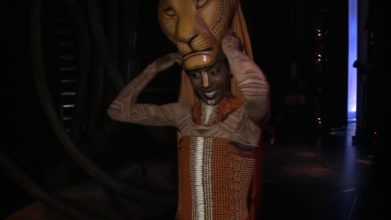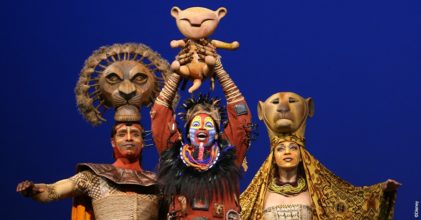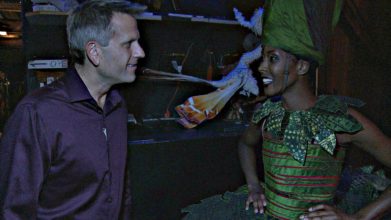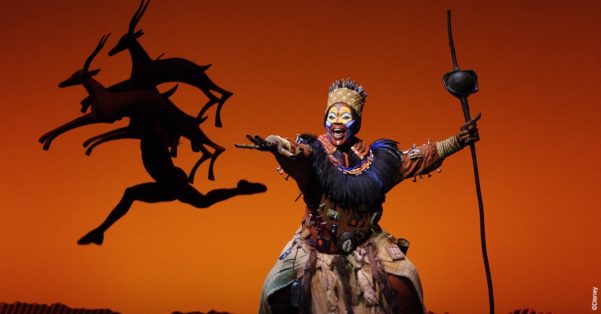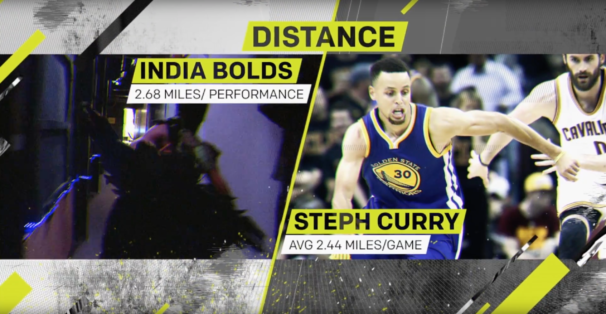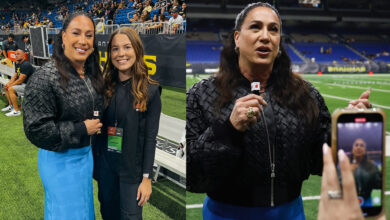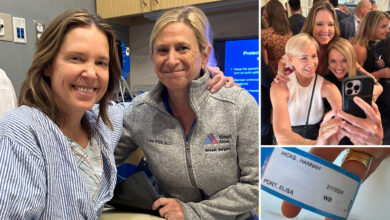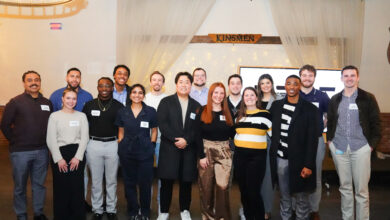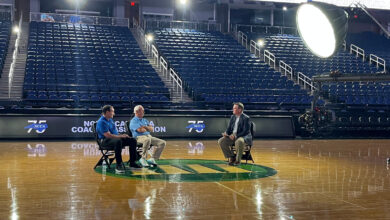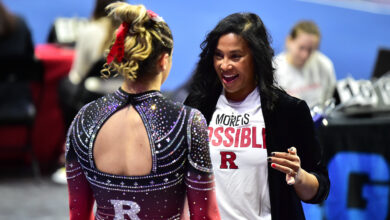ESPN Sport Science takes Disney’s The Lion King into the lab

ESPN Sport Science segments explore and measure the science behind our favorite sports teams, players and plays.
But back in August, the Emmy Award-winning team decided to change things up a bit, and took their talents to the bright lights of Broadway, in New York City.
ESS visited Disney’s The Lion King on Broadway for a day and used an EEG machine to measure cast members’ brain activity, a biometric harness to track the body’s changes during a performance and motion capture suits to see how they activate mechanically. Then, they took this information back to their lab and compared the new information to recorded athlete data. (ESPN is owned by Disney.)
The first of three episodes tested cast member India Bolds as she goes through an entire show. She portrays nine different characters and makes 14 costume changes. Bolds, it turns out, covers more distance during the show (2.68 miles) than NBA star Steph Curry’s average mileage recorded in a game during the 2015-2016 season (2.44 miles).
ESPN Sport Science producer Denny Wolfe gave Front Row some insight on what went into the making of the segments. The “Stamina” segment can be seen here; more episodes will be revealed later this year.
– Denny Wolfe, producer,
ESPN Sport Science
What sparked this collaboration?
Initially, we were contacted by Joelle Downes [senior director, ESPN Marketing Synergy], and she brought this idea to Features Unit senior coordinating producer Victor Vitarelli about doing a Sport Science on The Lion King and its actors. Victor and I both knew this was a great opportunity for us to do something different with Sport Science, not just from a content perspective, but also to provide a new platform to show what we could do with our storytelling and technology.
What is the most interesting thing you learned?
I’ve seen the show before in New York City, so I may be guilty of just viewing the cast only as “actors” because they’re on a stage dancing and singing. But, after we started shooting, it became so clear how multi-dimensional each person is there. They’re not just performing artists, they’re tremendously gifted athletes who can act, dance and sing. So, I hope that people who see these segments come away with the appreciation that I had for what each and every one of them do.
What was different in measuring the cast members vitals in the theater compared to in the usual Sport Science lab?
Our counterparts with The Lion King provided great access to the actors, and we were able to do some different things and experiment because of that. Having the time and willingness of someone to wear an EEG device to measure brainwaves was tremendously insightful. Motion-capture suits allowed us to see how the performers made moves possible on stage, but I’m still blown away by how active and fit actress India Bolds was as we tracked her through an entire performance.
- Biomechanics (11/14): “We analyzed dancers and compared their power and agility to some of the best athletes in the world. As one of the Lionesses, actress Bravita Threatt needs to maintain perfect balance during the dances. To do that, she extends her right femur 30 percent higher than the average human can raise a leg. Lamar Baylor can get his feet to reach speeds of 22 miles per hour on stage, and his pirouettes move 35 percent faster than the spin move of Dallas Cowboys running back Ezekiel Elliott. Ray Mercer generates nearly 900 pounds of force on tumbling runs, which is the same force Los Angeles Clippers all-star Blake Griffin uses to get airborne for a dunk.
- Puppetry/Multi-tasking (12/12): “To determine the level of multi-tasking needed to recite their lines and operate the character’s puppet, we wired Cameron Pow – who plays Zazu – and Lisa Lewis – who portrays a cheetah – with an EEG device to measure their brain activity as they perform. Much like an elite athlete who becomes skilled with repeated practice, we determined that Cameron and Lisa’s brains view their puppets as extensions of their body.”
